A Visual Explanation of SQL Joins
INNER JOIN
FULL OUTER JOIN
LEFT OUTER JOIN
RIGHT OUTER JOIN
CROSS JOIN
Assume we have the following two tables. Table A is on the left, and Table B is on the right. We'll populate them with four records each.
id name id name -- ---- -- ---- 1 Pirate 1 Rutabaga 2 Monkey 2 Pirate 3 Ninja 3 Darth Vader 4 Spaghetti 4 NinjaLet's join these tables by the name field in a few different ways and see if we can get a conceptual match to those nifty Venn diagrams.
SELECT * FROM TableA INNER JOIN TableB ON TableA.name = TableB.name id name id name -- ---- -- ---- 1 Pirate 2 Pirate 3 Ninja 4 NinjaInner join produces only the set of records that match in both Table A and Table B. |
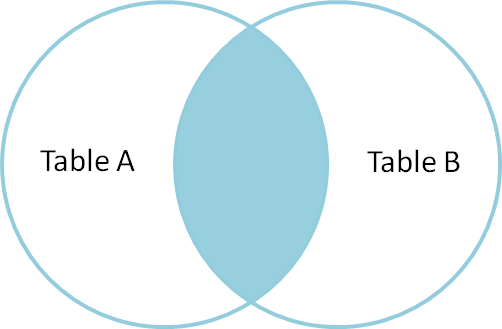 |
SELECT * FROM TableA FULL OUTER JOIN TableB ON TableA.name = TableB.name id name id name -- ---- -- ---- 1 Pirate 2 Pirate 2 Monkey null null 3 Ninja 4 Ninja 4 Spaghetti null null null null 1 Rutabaga null null 3 Darth VaderFull outer join produces the set of all records in Table A and Table B, with matching records from both sides where available. If there is no match, the missing side will contain null. |
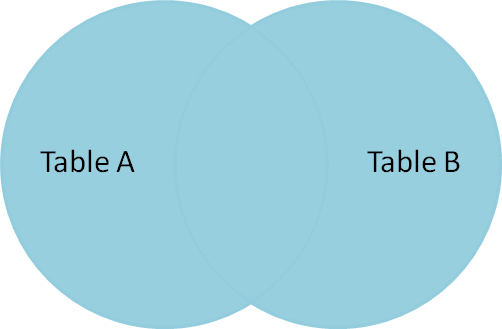 |
SELECT * FROM TableA LEFT OUTER JOIN TableB ON TableA.name = TableB.name id name id name -- ---- -- ---- 1 Pirate 2 Pirate 2 Monkey null null 3 Ninja 4 Ninja 4 Spaghetti null nullLeft outer join produces a complete set of records from Table A, with the matching records (where available) in Table B. If there is no match, the right side will contain null. |
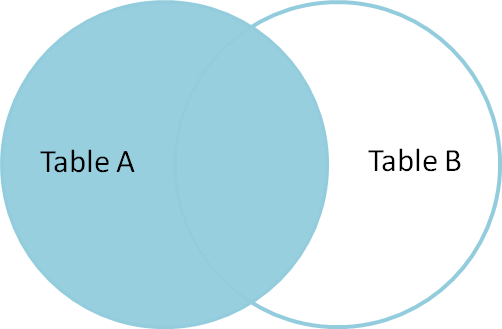 |
SELECT * FROM TableA LEFT OUTER JOIN TableB ON TableA.name = TableB.name WHERE TableB.id IS null id name id name -- ---- -- ---- 2 Monkey null null 4 Spaghetti null nullTo produce the set of records only in Table A, but not in Table B, we perform the same left outer join, then exclude the records we don't want from the right side via a where clause. |
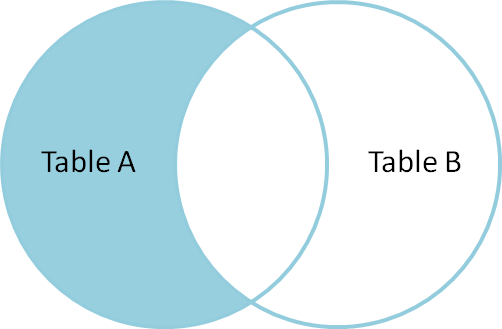 |
SELECT * FROM TableA FULL OUTER JOIN TableB ON TableA.name = TableB.name WHERE TableA.id IS null OR TableB.id IS null id name id name -- ---- -- ---- 2 Monkey null null 4 Spaghetti null null null null 1 Rutabaga null null 3 Darth VaderTo produce the set of records unique to Table A and Table B, we perform the same full outer join, then exclude the records we don't want from both sides via a where clause. |
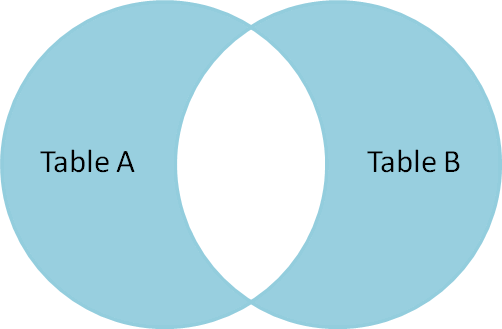 |
There's also a cartesian product or cross join, which as far as I can tell, can't be expressed as a Venn diagram:
SELECT * FROM TableA CROSS JOIN TableBThis joins "everything to everything", resulting in 4 x 4 = 16 rows, far more than we had in the original sets. If you do the math, you can see why this is a very dangerous join to run against large tables.
QUIZ:
This Question was asked by interview.
Any one Can answer this question BY comment this blog?
Write Query B shaded Area?
- Left Outer Join.
- Right Outer Join.
- Full Outer Join.
Left Outer Join - A Left Outer Join in SQL Server returns the “Matched Rows” from multiple tables and “Non Matched Rows” from Left side table. Follow the above picture for more understanding.
Right Outer Join - A Right Outer Join in SQL Server returns the “Matched Rows” from multiple tables and“Non Matched Rows” from Right side table. Follow the above picture for more understanding.
Full Outer Join - A Full Outer Join returns “Matched Rows” from multiple tables and also “Non Matched Rows” from multiple tables. Follow the above picture for more understanding.



No comments:
Post a Comment